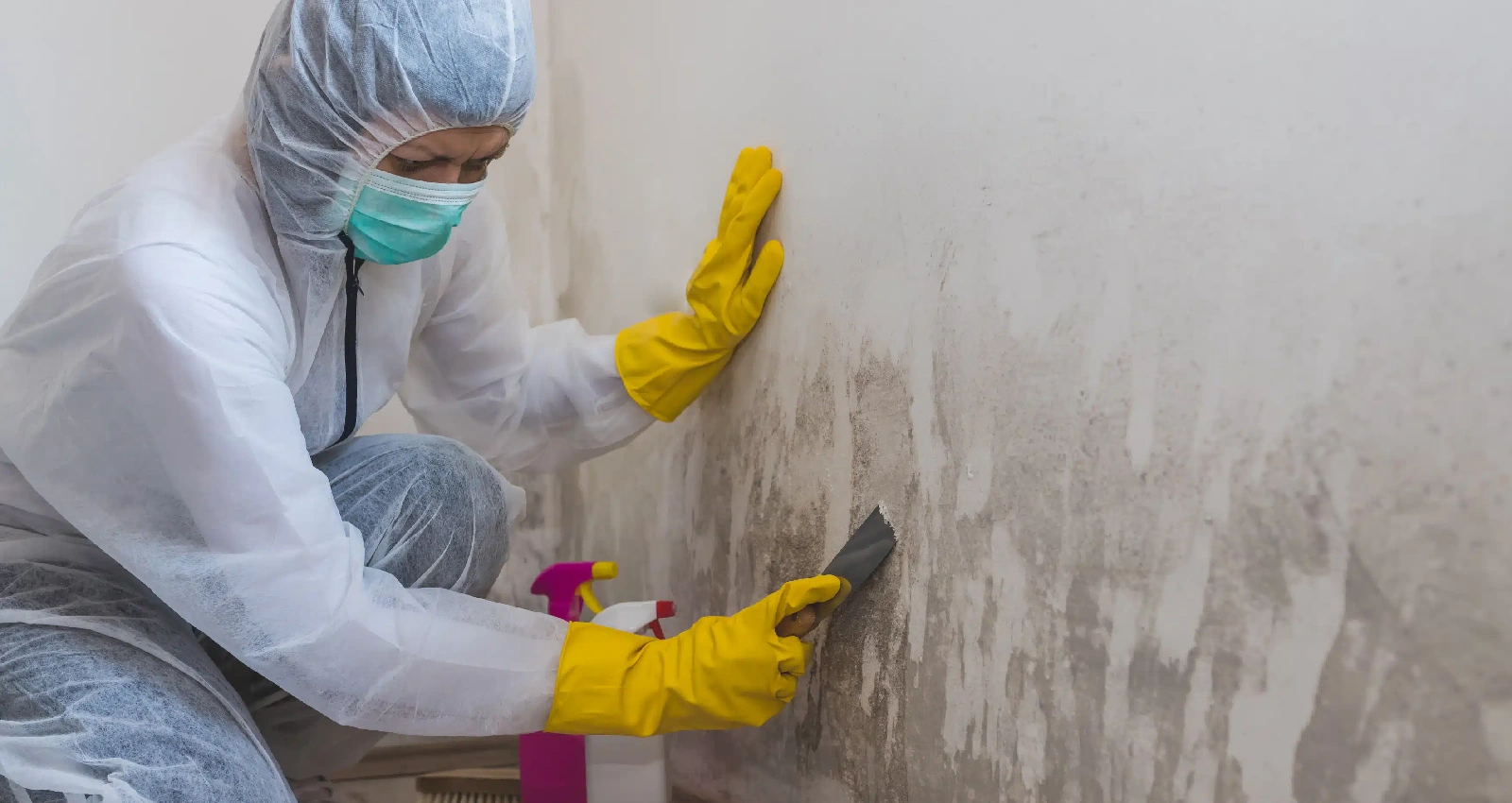Welcome to the comprehensive guide on mold remediation for homeowners. Mold is a common issue that many homeowners face, and it can pose serious health risks if not properly addressed.
In this guide, we will explore everything you need to know about mold remediation, including understanding mold and its dangers, recognizing the signs of mold infestation, DIY mold remediation techniques, when to hire a professional mold remediation service, and preventing future mold growth in your home.
By the end of this guide, you will have a thorough understanding of mold remediation and be equipped with the knowledge of how to get rid of mold in-house.

Understanding Mold and Its Dangers
If you’re currently searching for mold remediation near me, it is important to understand what mold is and the dangers it can pose.
Mold is a type of fungus that thrives in moist environments. It reproduces by releasing spores into the air, which can then settle on surfaces and grow into colonies.
While mold serves a purpose in nature by breaking down organic matter, it becomes a problem when it grows indoors.
Mold exposure can cause a variety of health issues, including allergic reactions, asthma attacks, respiratory infections, and more.
Understanding the dangers of mold is crucial to take appropriate actions while you seek for how to get rid of mold in the house.
Signs of Mold Infestation in Your Home
Recognizing the signs of mold infestation is essential in addressing the issue before it worsens.
Some common signs of mold in your home include a musty odor, visible mold growth on surfaces, water stains or discoloration, and the presence of allergic symptoms such as sneezing, coughing, and watery eyes.
It is important to note that mold can often grow in hidden areas such as behind walls, under carpets, or in the ceiling, so thorough inspection is necessary.
If you suspect mold infestation in your home, it is crucial to take immediate action to prevent further spread and potential health risks.
DIY Mold Remediation Techniques
For small-scale mold problems, homeowners can consider implementing DIY mold remediation techniques.
It is important to remember that DIY methods are only suitable for minor mold issues and should not be attempted for large or severe infestations.
One effective technique is to clean non-porous surfaces with a mixture of detergent and water.
Scrub the affected area thoroughly and ensure it is completely dry to prevent regrowth. Another method is using a bleach solution to kill mold on hard surfaces.
However, it is important to use bleach with caution and follow safety guidelines. Additionally, improving ventilation in your home, fixing any moisture problems, and using mold-resistant products can help prevent future mold growth.
Exploring Mold Remediation Costs
Mold remediation costs in the US can vary depending on the size and severity of the infestation.
On average, homeowners can expect to pay between $500 to $6,000 for mold remediation services.
Factors that can influence the cost include the extent of the mold growth, the location of the mold, and the materials needed for remediation.
In some cases, insurance coverage may help offset the mold remediation cost, so it’s important to check with your insurance provider.
While the cost of mold remediation may seem daunting, it is crucial to address mold issues promptly to prevent further damage and protect your health.
By investing in professional mold remediation services, homeowners can ensure a thorough and effective mold remediation process in their homes.
When to Hire a Professional Mold Remediation Service
While DIY mold remediation techniques can be effective for small-scale mold problems, there are instances where it is necessary to hire a professional mold remediation service.
If you have an extensive mold infestation, it is best to leave the remediation process to the experts.
Professional mold remediation services have the necessary equipment, expertise, and experience to safely and effectively remove mold from your home.
They can conduct a thorough assessment, identify the root cause of the mold issue, and implement appropriate remediation strategies.
Hiring a professional service ensures that the mold problem is properly addressed and reduces the risk of further contamination or health hazards.
Conclusion
In conclusion, the mold remediation process is an important thing that homeowners should be aware of to maintain a safe and healthy living environment.
By understanding the dangers of mold and knowing the signs of mold infestation, homeowners can take the necessary steps to address mold issues in their homes.
DIY mold remediation techniques can be effective for small-scale mold problems, but for larger or more severe infestations, it is recommended to hire a professional mold remediation service.
Additionally, taking preventive measures to minimize future mold growth is essential in ensuring a mold-free home.
By following the guidelines outlined in this comprehensive guide, homeowners can effectively combat mold and create a safe living space for themselves and their families.
FAQs
Q1: What are the health risks associated with mold exposure?
A: Mold exposure can lead to a range of health issues, particularly for those with allergies, asthma, or weakened immune systems. Common symptoms include sneezing, coughing, skin rashes, eye irritation, and respiratory problems. Prolonged exposure can exacerbate asthma and lead to more serious respiratory infections.
Q2: How can I prevent mold growth in my home?
A: Preventing mold growth involves controlling moisture levels in your home. Ensure proper ventilation in high-moisture areas like bathrooms and kitchens, fix leaks promptly, use dehumidifiers in damp areas, and regularly clean and dry areas prone to moisture. Using mold-resistant building materials can also help.
Q3: Can mold come back after remediation?
A: Yes, mold can return if the underlying moisture problem is not addressed. Effective remediation involves not only removing the existing mold but also fixing any moisture issues to prevent future growth. Regular inspections and maintenance are crucial to keeping your home mold-free.
